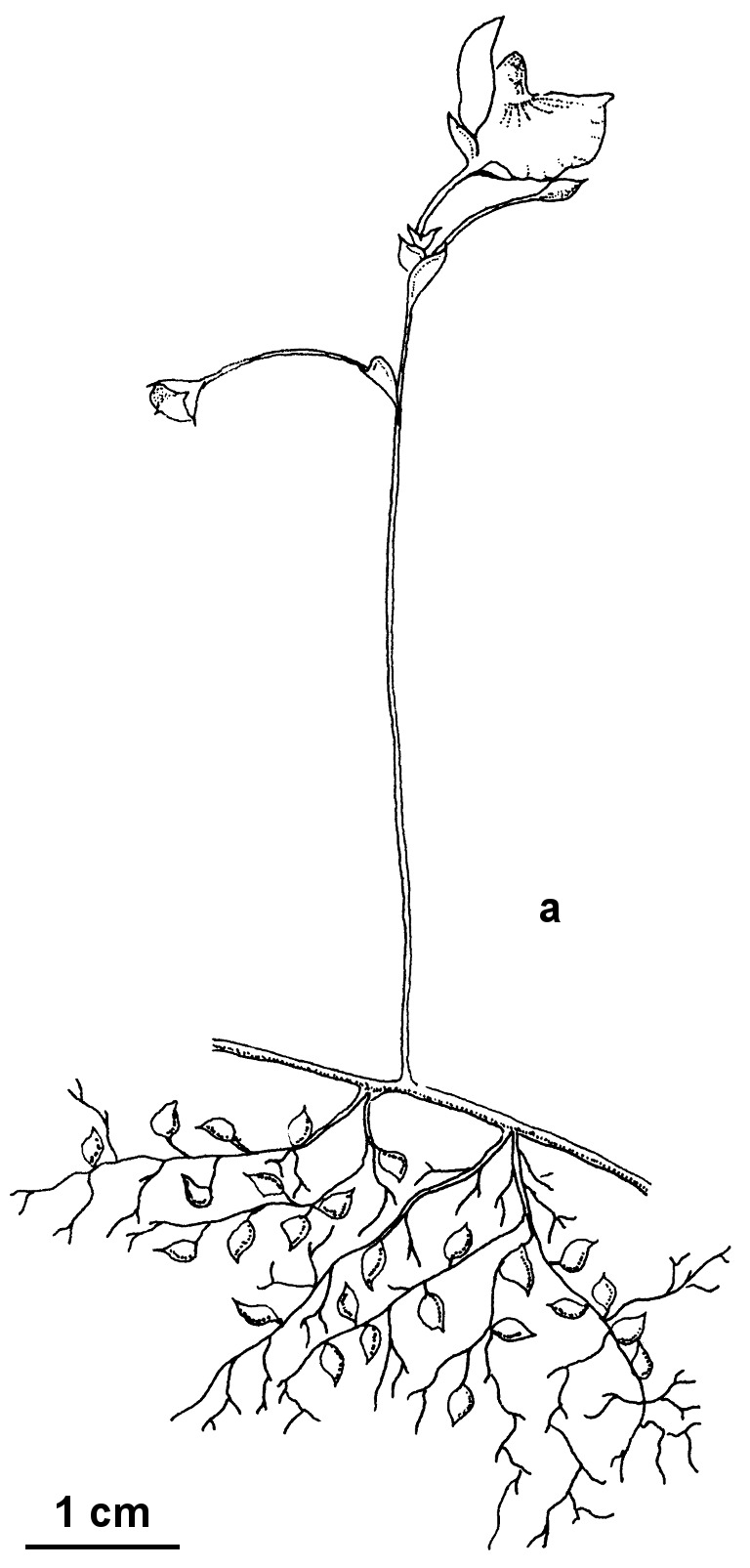Utricularia australis
R.Br. Yellow BladderwortSuspended aquatic perennial with branched filiform stolons to 50 cm long. Leaves alternate, 1.5–4 cm long, divided from base into 2 c. equal capillary segments, these again repeatedly dichotomously divided. Traps ovoid, 0.5–2.5 mm long, dimorphic, mouth lateral or basal. Raceme emergent, c. erect, c. 10–30 cm long, 4–10-flowered; axis elongating after anthesis; sterile bract 1, rarely 2 or 3, in upper half of peduncle; fertile bracts basifixed, 3–5 mm long; bracteoles absent; calyx-lobes subequal, ovate, 3–4 mm long. Corolla 12–20 mm long, yellow with reddish-brown lines and spots on lower lip; upper lip broad-ovate; lower lip much larger, reniform or transversely elliptic, with a raised gibbous palate; spur broadly conical, shorter than lower lip. Capsules apparently not produced in Australia. Flowers Nov.–Apr. (rarely seen).
Wim, GleP, VVP, VRiv, MuF, GipP, OtP, CVU, GGr, DunT, EGL, EGU, HSF, HNF, Strz, MonT. Also WA, NT, SA, NSW, Tas. New Zealand, New Guinea, Asia, Europe, Africa. A widespread species of lakes, pools and billabongs in still or slowly flowing water.
Jeanes, J.A. (1999). Lentibulariaceae. In: Walsh, N.G.; Entwisle, T.J., Flora of Victoria Vol. 4, Cornaceae to Asteraceae, pp. 547–553. Inkata Press, Melbourne.
 Spinning
Spinning




